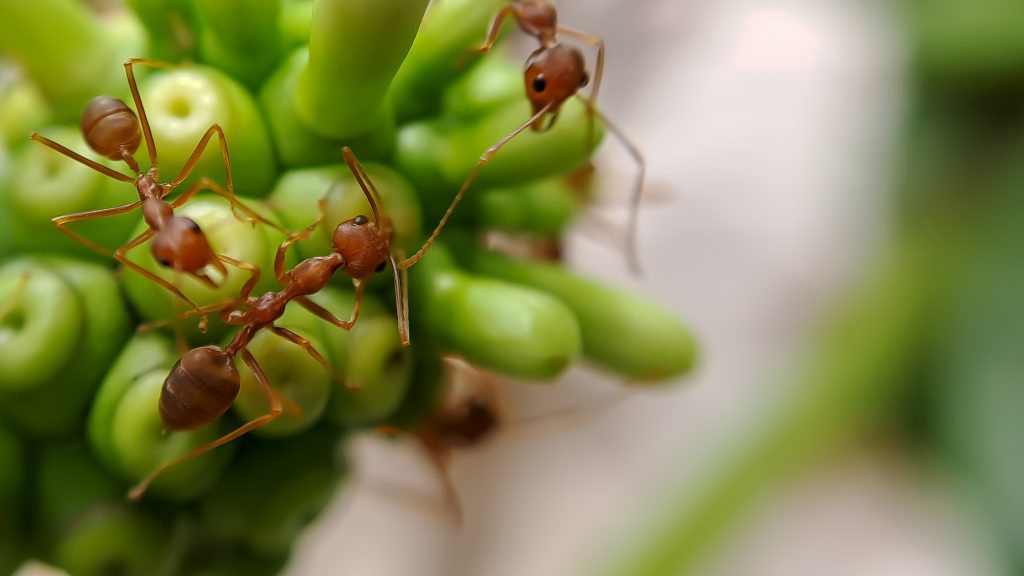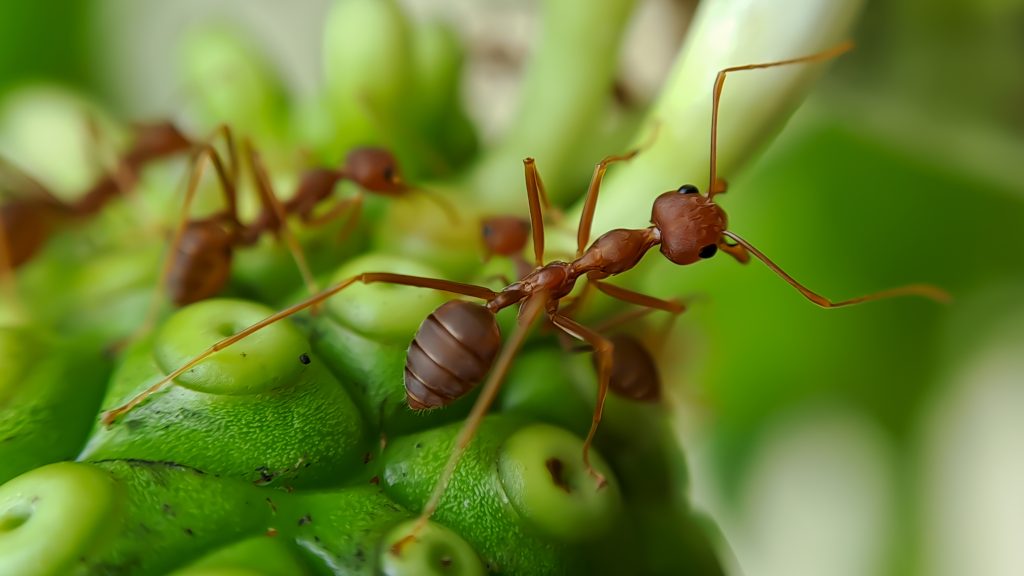Fire Ants
Fire ants are a pain for any property owner, these ants can be painful to anyone that disturbs their mound. They will sting any person or animal that steps on their mound with no provocation. Fire ants also cause destruction to the environment by killing trees and shrubs.
The good news is fire ants are easy to control, they have few natural predators, and they are incredibly susceptible to most kinds of pesticides. The bad news is fire ants can spread quickly and create large nests with thousands upon thousands of ants in a relatively short time.
Description
- Two Nodes 1/16 to 1/4 inch long.
- Color ranges from reddish-brown with a darker abdomen to yellowish-red with ablack abdomen to solid black depending on the species.
- Many worker sizes. Any ant trail of red & brown ants with various sizes are likelyfire ants.
- They aggressively sting and some people are allergic to their stings.
Some Key Biology aspects of the Fire Ant
- There are three species: The most important of them and are prevalent in Floridaare the imported fire ant. This ant is dominant in the south from North Carolinato Texas and has isolated infestations in California. Another notable fire ant is thesouthern fire ant and it occurs in the same ranges as the imported fire ant but isprimary in California and southern Arizona. Last but not least is the tropical fireant is found in Hawaii.
- Fire ants build distinctive dome-shaped mounds ranging 12 to 24 inches abovethe ground and they can range from a few inches to several feet deep.
- During dry periods fire ants retreat underground and are hard to notice.
- During heavy rainfall mounds can appear literally overnight.
- Mounds can sometimes be hard to see being hidden under leaf litter or sod andthick vegetation.
- Imported fire ants have been known to nest on the rooftops of commercialstructures and invade the floors below.
- An average colony contains 100,000 to 500,000 worker ants, but a single queen isusually the rule, but in recent years there have been nests found with multiplequeens and becoming more common.
- Fire ants will feed on items such as insects, honeydew, plant nectar, seeds, fruitand animal carcasses.
- Fire ants forage in distinct trails through lawns and on pavement and foundationsof buildings.
- Colonies are mobile, colonies move the nest usually every few months and onoccasions will relocate into a structure.
- Fire ants are a problem in many parts of the world and can be extremely pesky.
- They are small
,
black insects that live in colonies and have a strong mandibular
bite. - They
cause damage by raiding homes for food and shelter, as well as sucking
blood from humans or animals. - Their bites can swell quickly and produce intense pain. If you’re concerned aboutfire ants, it’s important to take appropriate action to prevent them from enteringyour home.
Fire Ant Inspection Tips
- Look for visible mounds
- Check perimeter foundations and landscape beds
- look for trails and attempt to follow it back to the nesting areas
- Inside the fire ants will follow along the edges of carpet around the walls, thecolonies are generally outside near the foundation or under the slab.
- Fire ants can be attracted by drops of jelly, Gel ant baits or granular baits. after 15 to 20 minuets ant trails feeding on this can be tracked back to the nesting areas.










